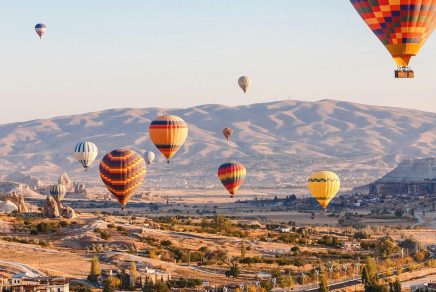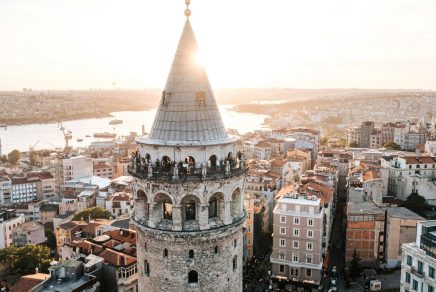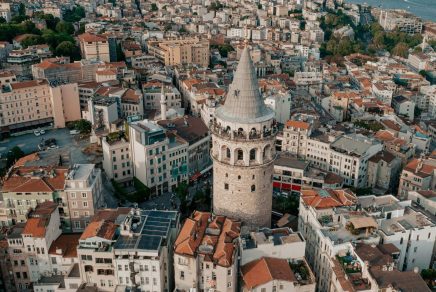Istanbul is a city like no other, and that’s not a lazy aphorism. Between its human history dating back quite literally thousands of years to the way the Bosphorus divides the city between the Asian side and the European side, it’s a city of grand scale, volume and capacity ripe for exploration.
Believe me when I say you’ll never see it all when you visit Istanbul. After living there for three years, I still have many things on my to-do list, and it grows each time I visit. How many other cities can that be true for? From its more touristed areas like Sultanahmet and Beyoglu, to its lesser-visited but still incredible neighborhoods like Kadıköy, Ortaköy and Balat, it’s important to have a gameplan when you plan on visiting certain places in this beautifully chaotic city.
Of course, you want to ensure that you’re checking out the city’s major sites; the places one must see to say they’ve seen Istanbul, but as someone who lived in the city for years, and has visited many times since, it’s also important to see more than just the Golden Horn.
Inspired by a trip to Turkey? Here’s my little guide for a first-time trip to Istanbul, for a local-style experience.
How to best approach visiting Sultanahmet, Istanbul’s old town
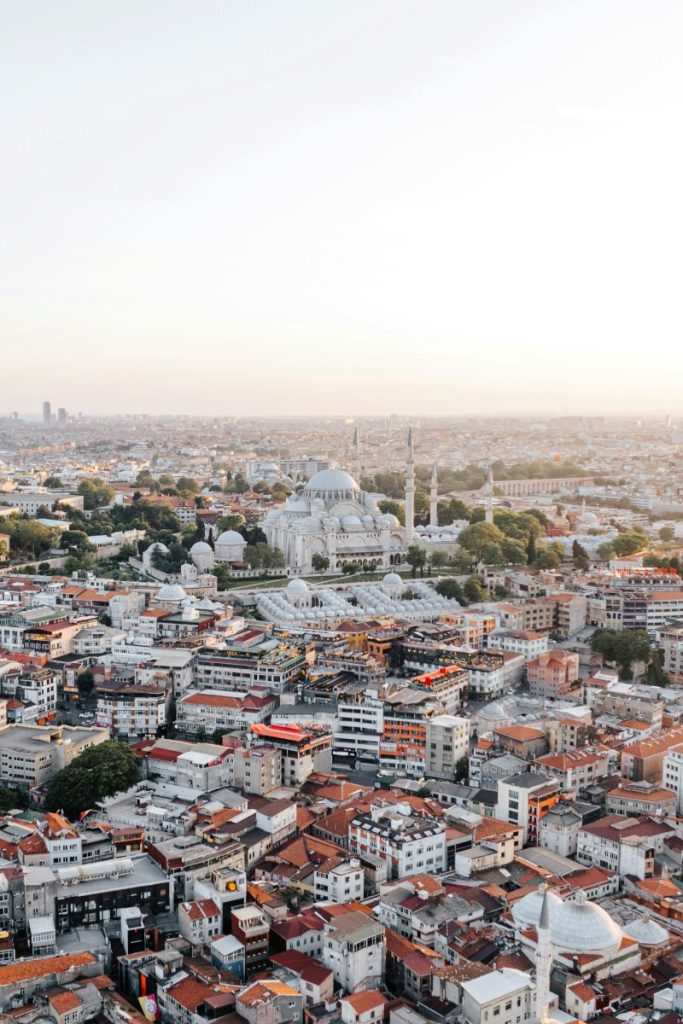
In terms of timeframe, most visitors will spend their first 2-3 days in Istanbul focused on Sultanahmet, and that’s because this is the historic centre of the city—effectively Istanbul’s Old Town (though the historical significance of the city can be seen almost anywhere if you’re looking for it).
What’s special about visiting Sultanahmet is that almost all of the major sites to visit are within walking distance, which is the best way to experience the area. Plus, my pro tip here—while it can be busy at times, and a touch overpriced, the views of Sultanahmet from the rooftop of the Seven Hills Restaurant (about a 5 minute walk from Sultanahmet Square) are exceptional.
Sultanahmet Square
Start by visiting the central plaza that’s located between the Hagia Sophia and the Blue Mosque, called Sultanahmet Square. These are some of the most iconic photos you’ll snap, because you’ll have the perfect view of both of these iconic buildings.
Hagia Sophia / Grand Mosque
The Hagia Sophia was once a church that was a religious crown jewel of Byzantine emperors. It became a mosque, understandably, not too long after Mehmed II’s conquest of Constantinople. It’s now a museum, and it’s worth buying a ticket to visit the interior, as you’ll see an interplay between Byzantine murals and Arabic scripture.
My tip? Visit the Hagia Sophia early in the morning. It’s the best way to avoid the queues that can get rather long midday.
Blue Mosque
The Blue Mosque, to me, is Istanbul’s most stunning structure. Those six striking minarets are world famous for a reason. It’s still active as a mosque. This means both men and women will need to dress appropriately to enter. And it’s closed to tourists during prayer time.
That being said, the Blue Mosque’s exterior here is the calling card. So if you’re short on time, I would largely worry about appreciating the mosque from the outside.
Topkapı Palace and Museum
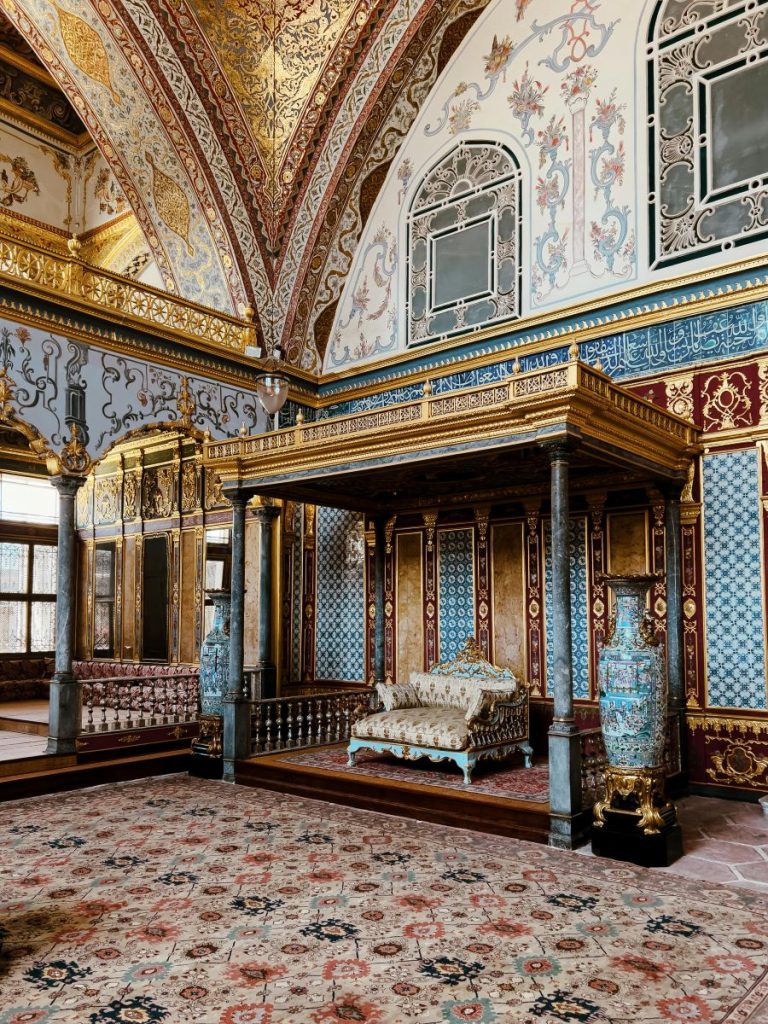
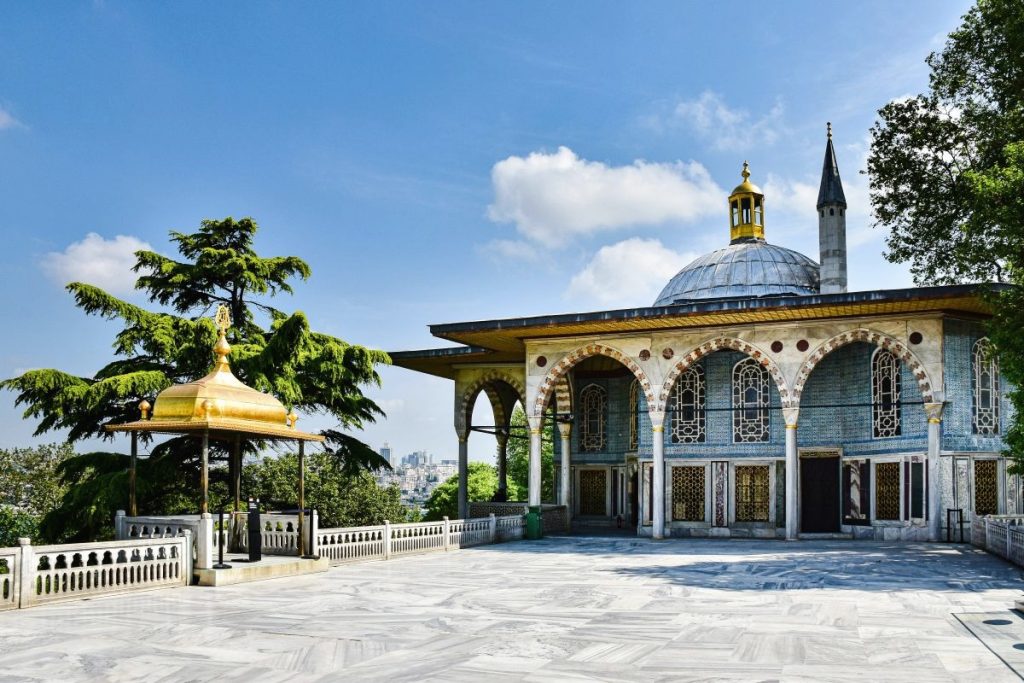
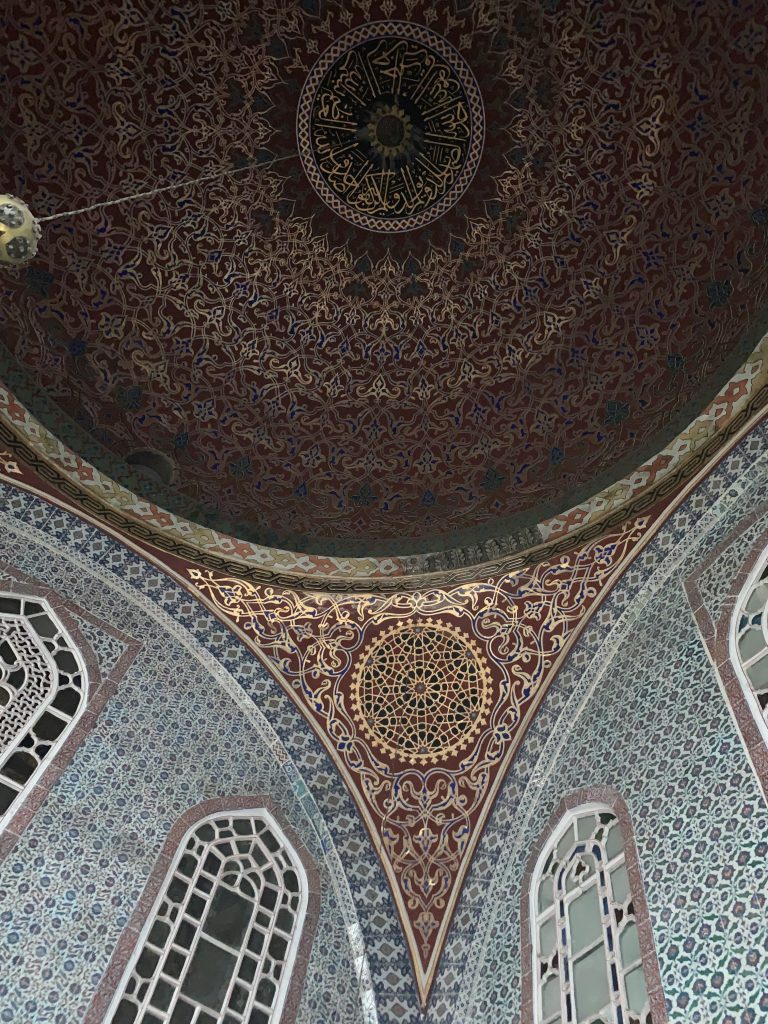
From here, you’re best to head to Topkapı Palace. This was the home of the Ottoman Sultans for over 400 years. Plan to spend a couple of hours here, visiting major sections of the palace, such as the harem, and rest your legs by sitting for a moment in the palace’s gorgeous courtyards. The Imperial Treasury located here is utterly remarkable. Take your time and read the information pertaining to the items they have here… You’ll notice they have treasures such as the Prophet’s Sword, the Staff of Moses, the Sword of David, and the Hand of John the Baptist.
Basilica Cistern
The one site that I often see visitors short on time miss is the Basilica Cistern, and that’s a big mistake. For photographers, the moody lighting and medusa-head columns are something to behold. You won’t have seen anything quite like this! When I had friends visiting, it was one site that I always described as “can’t miss.”
Bazaars of Sultanahmet
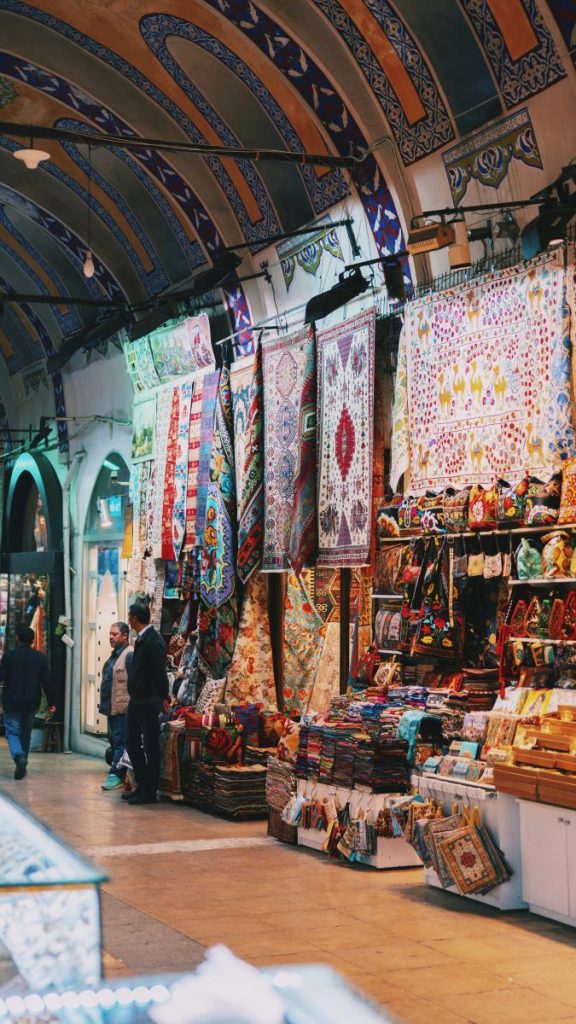
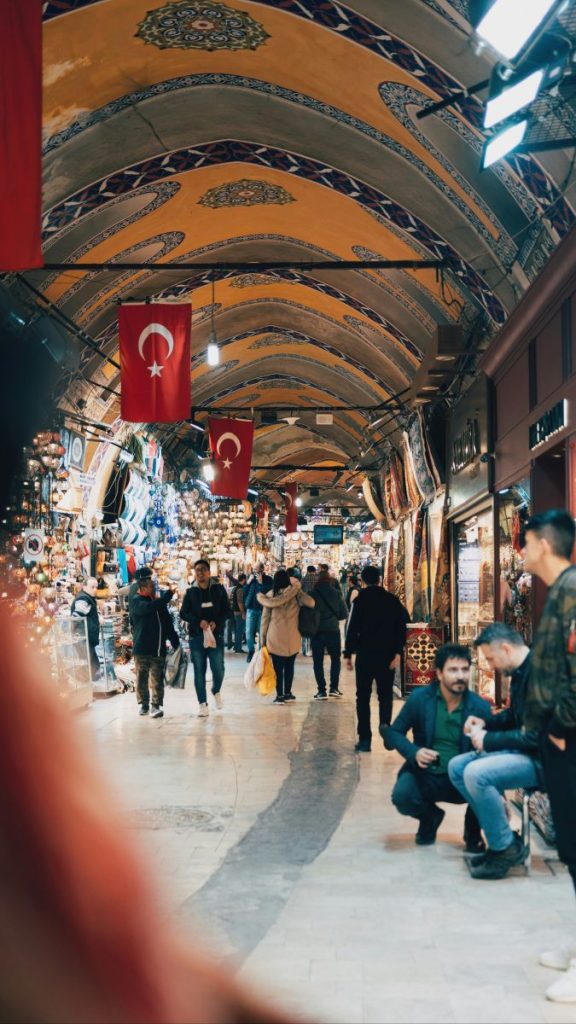
Rounding out your visit to Sultanahmet, you’ll want to head to a market.
- I feel as if you need to spend a little time in one of the oldest and largest covered markets on the planet, the Grand Bazaar. There you’ll find stalls filled with rugs, ceramics, spices, those famous hanging lanterns and more.
- The Arasta Bazaar is a bit quieter than the Grand Bazaar. Plus, you’ll have access to many of the same goods (I often recommend this for families).
- The nearby Spice Market is also worth visiting afterwards. , especially if you’re looking for a photo of the iconic spice mounds. It’s a fragrant, vibrant, and colourful place that photographers adore.
You’ll also see that there’ll be no shortage of haggling. Don’t feel pressure to make a purchase at the first shop you visit. Visit several shops of the same kind, and get a feel for prices. As you might imagine, the first price they offer will likely be much higher than what they’re willing to sell it for. The phrase “çok pahalı,” roughly translated to “it’s too expensive,” will serve you well here.
Attractions and places to see in modern Istanbul
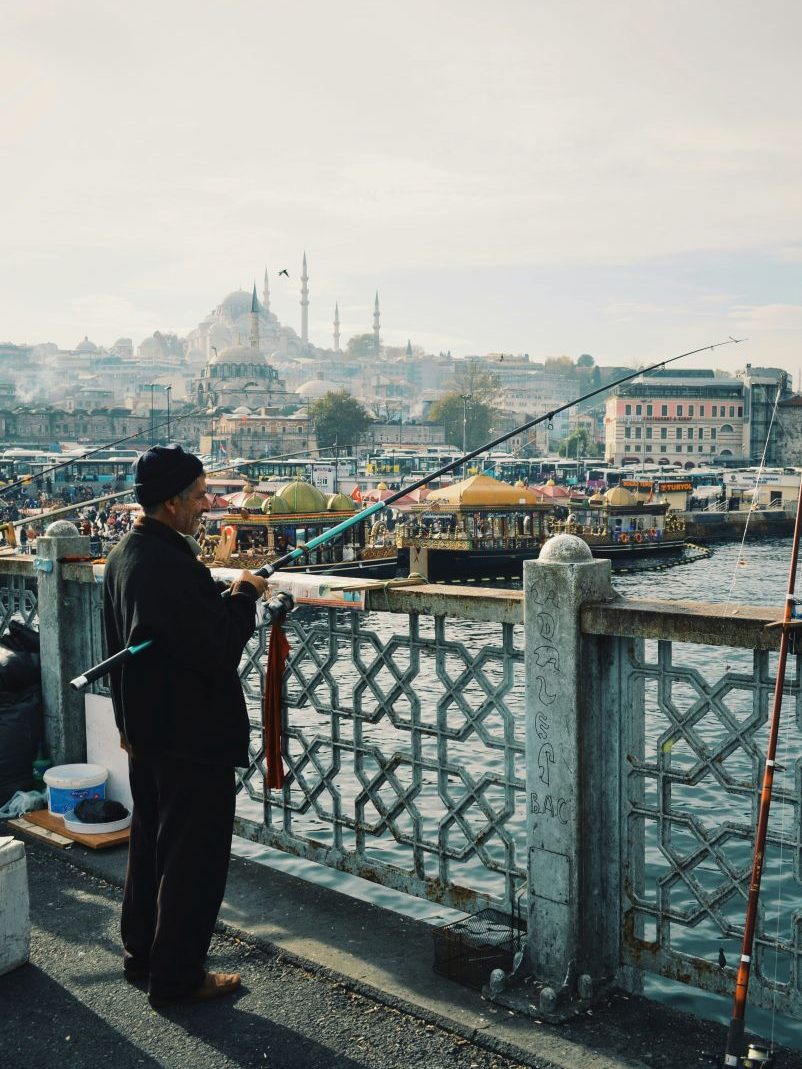
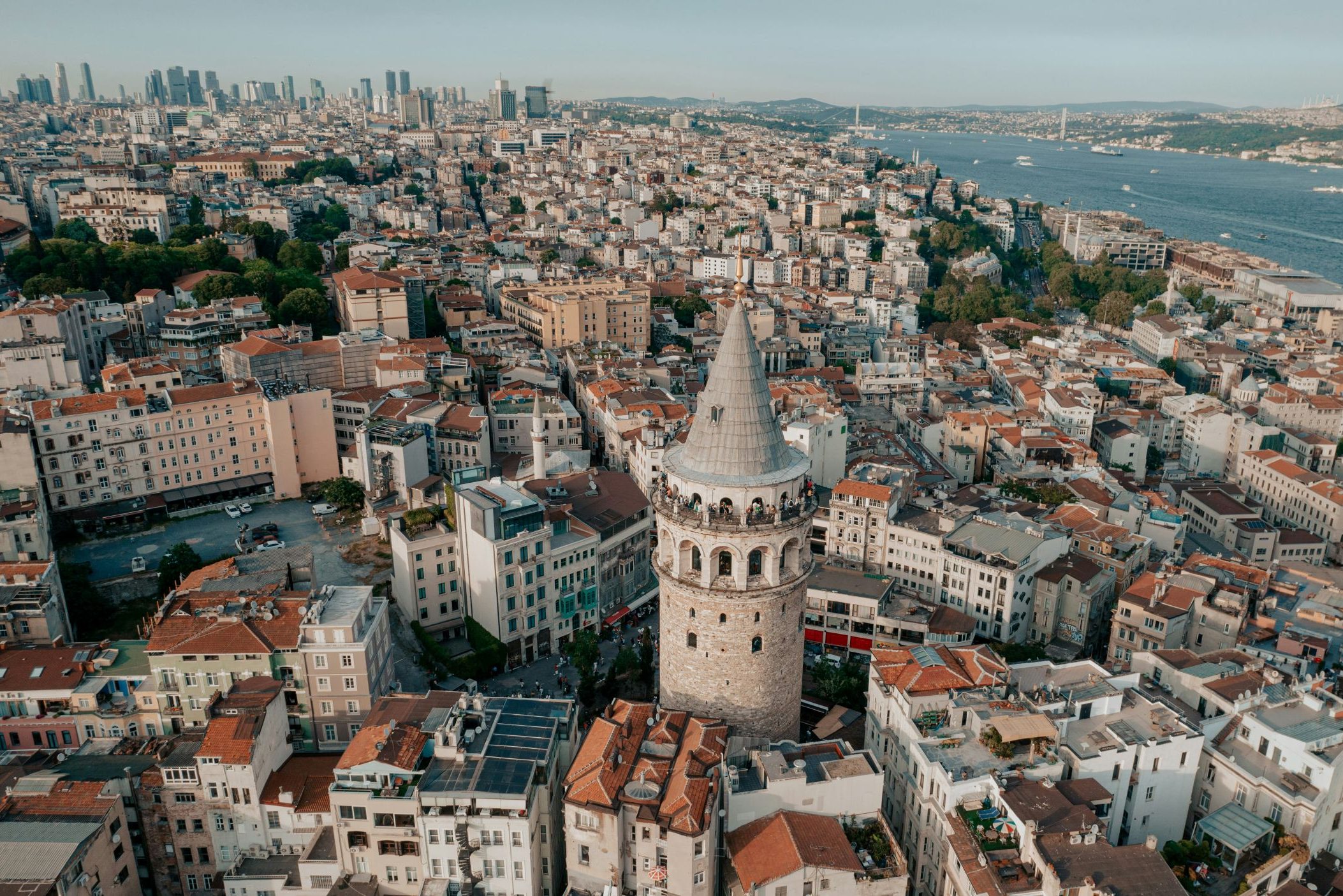
Still got a couple of days left in Istanbul? Good! Explore further afield from Sultanahmet… on foot! However, while it’s the best way to go, note this may be too far a walk for some visitors on a hot day In Istanbul.
- Cross the Galata Bridge from the Golden Horn. This is the symbolic route from the ancient part of the city to the modern side. You’ll see fishermen hard at work for their next catch—another iconic photo to snap. Not surprisingly, this area is the best place to get yourself a balik ekmek, or fish sandwich.
- From here, explore the hip and up-and-coming Karaköy neighborhood, and then make your way to the Galata Tower. Go up the tower during the day, but I encourage you to come back at night to see it all lit up, as the streets around it are similarly illuminated for nighttime walking. Karaköy is also home to the Istanbul Museum of Modern Art, which I feel is one of the most underrated experiences in the city.
- Spend the next few hours walking up Istiklal Caddesi, the main thoroughfare. Or take the famous tram that travels the street daily. That being said, I’d make time for a few diversions, especially when it comes to the elegant buildings in the Pera neighborhood, the “restaurant street” you’ll find in Nevizade, Taksim Square itself, and the hip, liberal Cihangir neighborhood.
As a quick side note on Galata, one of my favorite Turkish breakfast spots is called Cafe Privato. While its back patio offers views of the Galata Tower, the plates they serve are picturesque in their own right. Trust me! Expect to see a variety of cheese, jams, olives, menemen (scrambled eggs with tomatoes and peppers), fresh vegetables, and pastries and flatbreads like börek and gözleme.
Diving deeper in Turkey: what are the best things to visit in Istanbul for the first time?
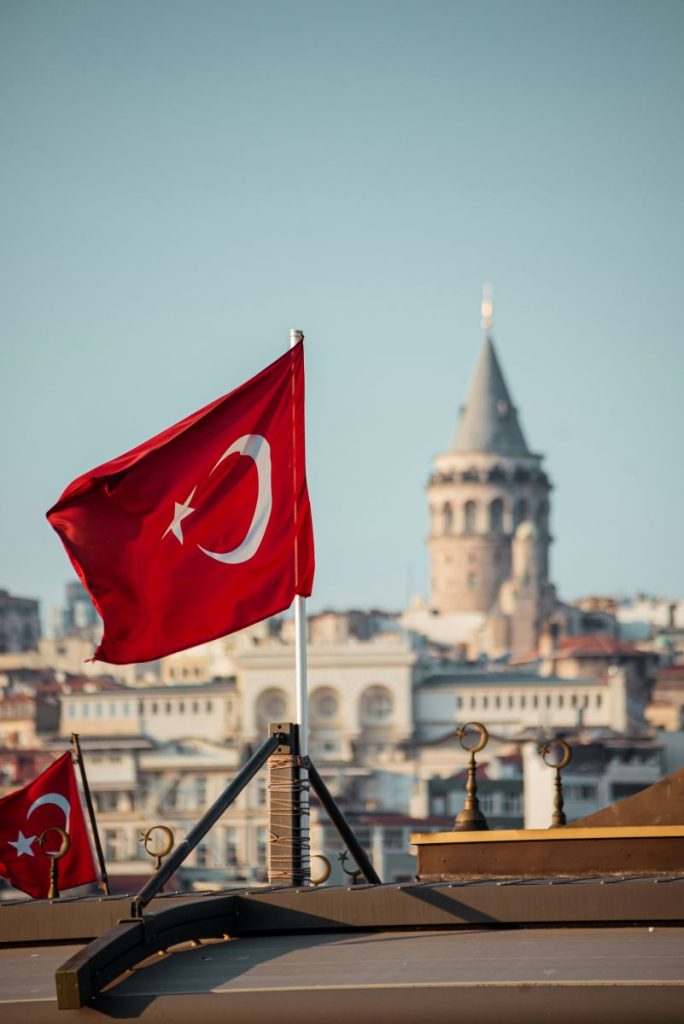
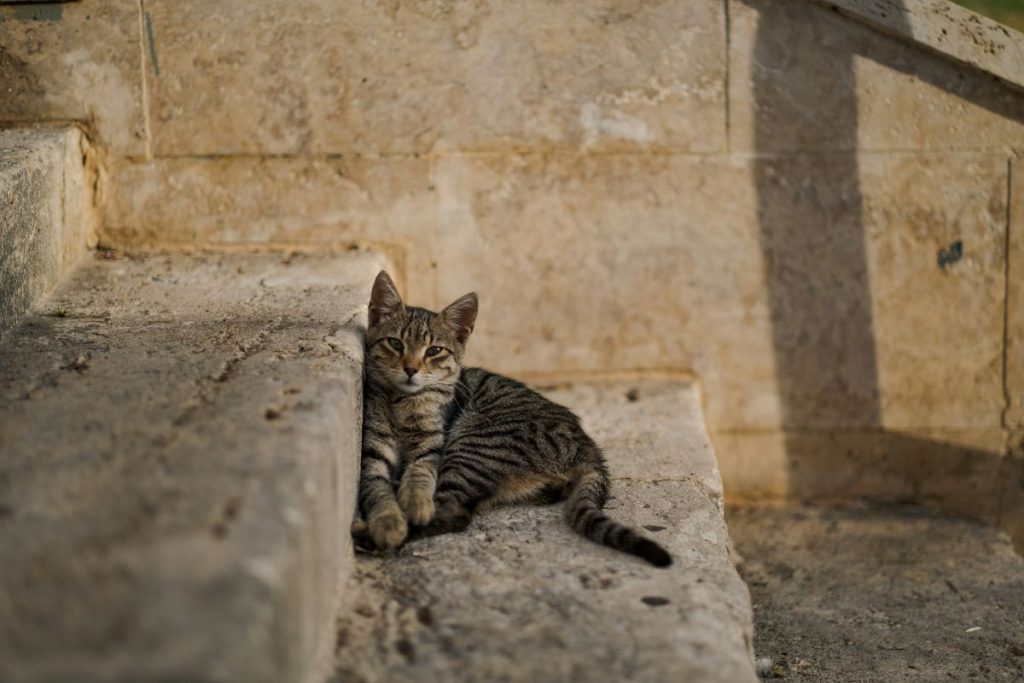
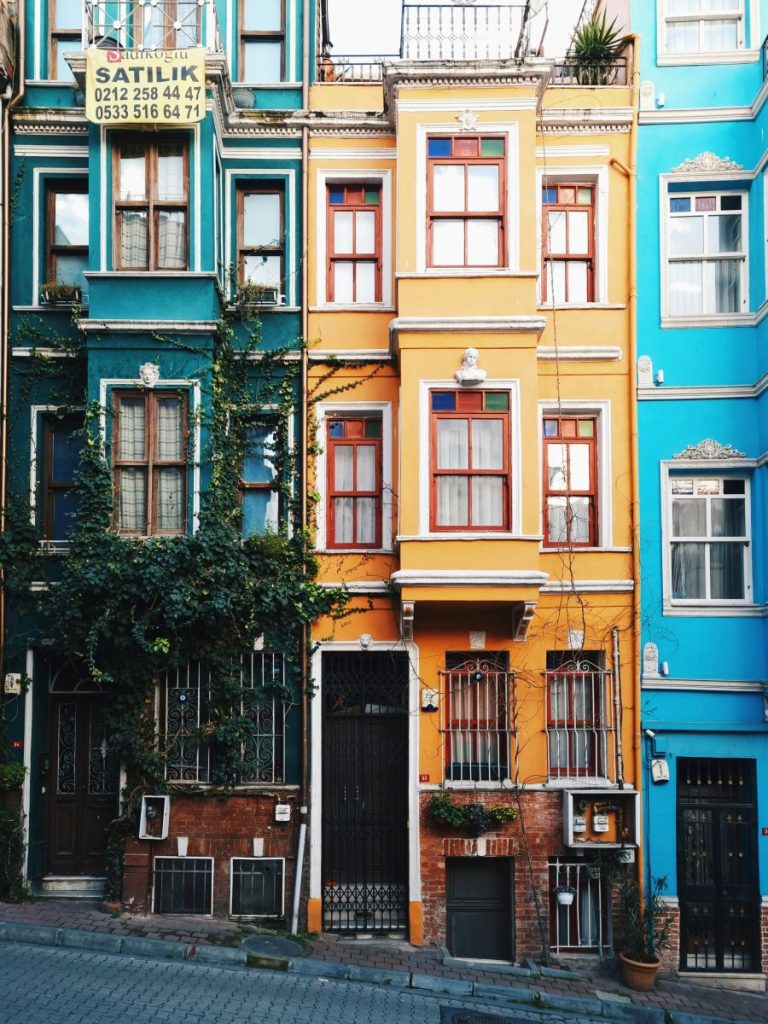
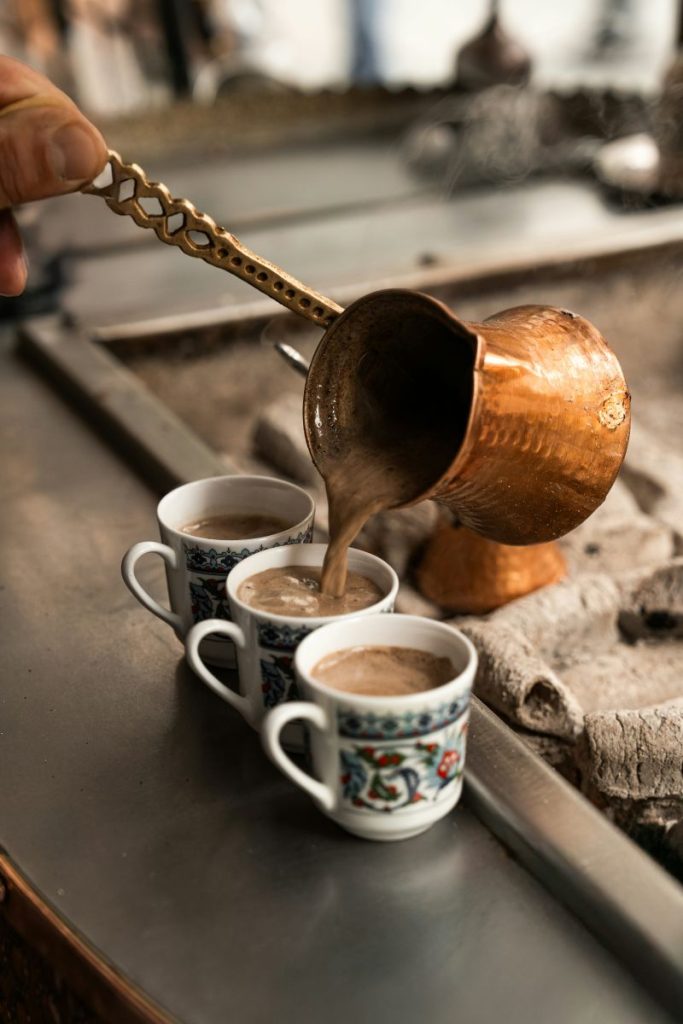
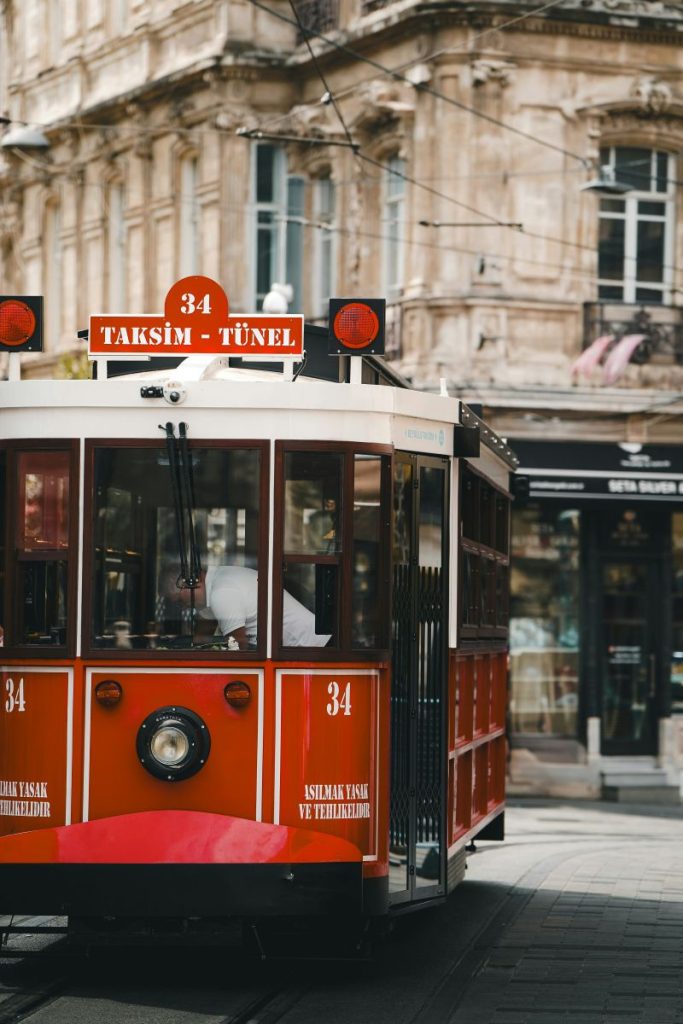
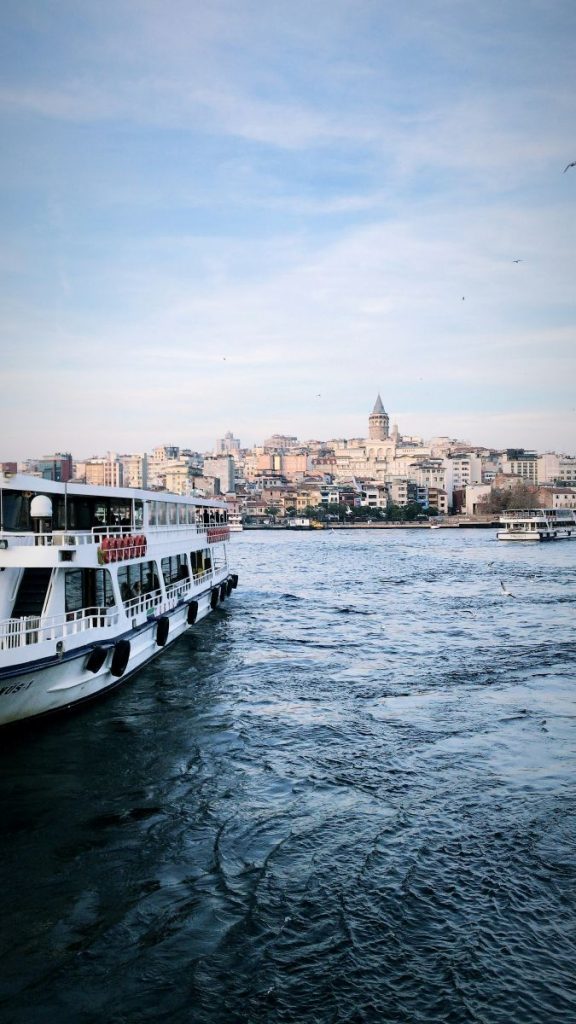

While this guide helps you, it’s also critical to let Istanbul be your guide. Be present for the sights and sounds that make the city special, and prepare to leave with a lifetime of memories and a deeper understanding of this layered destination. You can reasonably set aside a few extra days in Istanbul to explore these options:
- Walk the Bosphorus: Take a half-day to do one of my favourite walks along the shore of the Bosphorus. Start in Beşiktaş (famous for its football club). Then, head to Ortaköy, where you should stop to take pictures of the mosque and try Istanbul’s version of a baked potato, called kumpir. Note the historic buildings and vibe in Arnavutköy. Then, make your way to Bebek, where you’ll find Rumeli Fortress, and a laid back vibe.
- Enjoy Turkish breakfast on the water: My partner Bri and I would often stop at Nezih (famous for their donuts, known as pişi) in Bebek at the end of our Bosphorus walk for a late Turkish breakfast and brunch.
- Take a ferry: A great way to get between neighbourhoods and avoid what can be chaotic traffic and congestion on the mainland. Beşiktaş or Eminonu are common departure points, and from here the city is your oyster. You’ll get your ferry experience, and beautiful views of the Bosphorus. Depending on the time of year, you may even see a pod of dolphins migrating between the Sea of Marmara and the Black Sea!
- Try local Turkish cuisine: To fuel your adventures around the city, stop at local restaurants to try kebab (adana kebab, which are essentially spiced minced meat skewers, are my favorite), pide or lahmacun (variations of Turkish-style pizza), manti (bite-sized Turkish-style dumplings), or beyaz peynır (essentially Turkish-style feta cheese). For dessert or a sweet treat, you must try baklava, lokum (Turkish delight), and künefe (a cheese-filled pastry with syrup).
- Dive deeper into other historic neighbourhoods: If you have extra time on the historic side of the city, I recommend Balat. This historic neighborhood has Jewish, Greek, and Armenian roots. The colorful houses here are stunning, and you’ll happen upon Greek Orthodox colleges, synagogues, churches, and plenty of street art.
- Head over to the Asian side of Istanbul: Take a ferry across to Kadıköy. This is a great bet, especially if you love streets buzzing with vibrant nightlife. When we lived here, we used to visit their “bar streets” on the regular.
- Check out Istanbul’s most posh neighborhood: Nişantaşı, in the more modern section of the city. It serves as a beacon for upscale shopping and dining, almost like a piece of Paris in Istanbul. You can do your shopping on Abdi İpekçi Street, but you’ll also want to peruse Maçka Park and set eyes on the Teşvikiye Mosque. Personally, I’d focus most of your attention here on the cute, hip cafes, art galleries, and concept stores.
My final tip? If you can, walk as much as you can. Despite the presence of hills aplenty, Istanbul is a city you can easily explore by walking. Seek out the major sites, but also to get a little lost. If you see an inviting side street, walk up it—you might find your favorite restaurant or cafe in the city on that very street. You never know what you’ll find around any corner!
